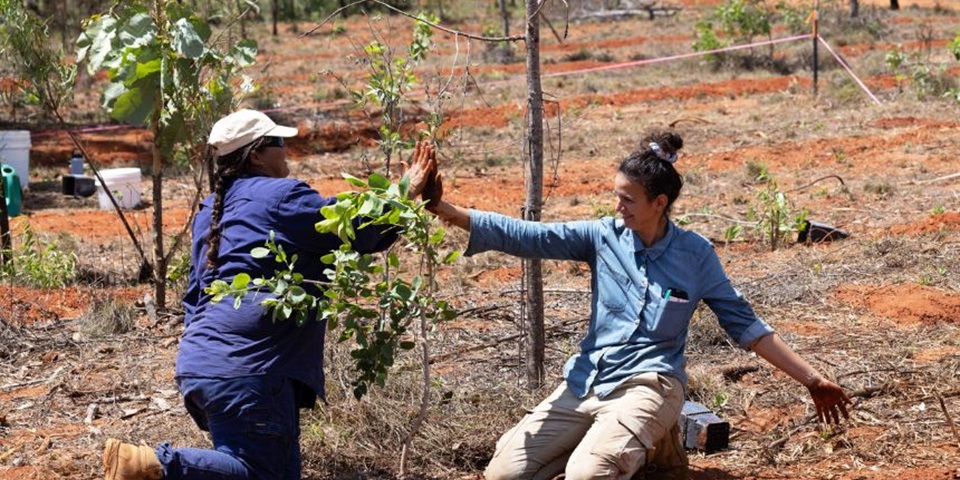News
Bush tucker could help restore ecosystems around Australia

New research suggests that bush tucker could contribute to restoring ecosystems around Australia, while providing on-Country employment opportunities for Indigenous communities.
Despite Indigenous knowledge being fundamental to land stewardship, only 2 per cent of profits from the sector are currently being held by First Nations peoples.
Murdoch University PhD candidate Sara Cavalcanti Marques sought to address this in her research, partnering with Traditional Landowners and North Regional TAFE to develop a training program to implement bush tucker cultivation in Broome.
The project was a two-pronged approach, with the planting thought to have positive environmental impacts while addressing a rapidly growing demand for Australian native bush foods and medicines.
Ms Cavalcanti Marques assessed the Savannah Enrichment (SE) model emerging in the Kimberley.
This is a novel horticultural concept, developed by Kim Courtenay from North Regional TAFE, which introduces high-value native food species to degraded ecosystems in order to meet both Indigenous enterprise development goals and land stewardship duties.
While SE successfully addresses native plant cultivation, it has not yet been assessed to quantify its performance as a potential tool for restoration, and in turn incentivise its implementation on a larger scale.
My study monitors existing Savannah Enrichment trials and compares these with degraded and healthy savannah reference sites to gauge the model’s performance in terms of its capacity for restoration and carbon sequestration,” Ms Cavalcanti Marques said.
Through this project, Ms Cavalcanti Marques said a key focus was tailoring a participatory framework for an accredited training program for Aboriginal Rangers.
This program allows for upskilling in the execution of research, contributing to the legacy of Rangers’ work caring for Country and fostering the continuity of the work beyond the project’s conclusion.
The chosen key species of bush tucker for the project’s Broome location was the Gubinge, also known as the Kakadu Plum.
“Through my collaboration with TAFE, we’ve chosen Gubinge as they key species due to its immense economic potential,” Ms Cavalcanti Marques said.
“It holds the highest concentration of Vitamin C and is sought after worldwide and has cultural importance locally.”
Rangers involved in the training program were from Nyangumarta, Karajarri and Bardi Jawi groups, along with Rangers from Kimberley Mineral Sands.
Ms Cavalcanti Marques said that with this research, she hoped to shed light on opportunities to diversity environmental practices to encompass a broader scope of social and ecological benefits.
By delivering key insights into the potential applications of the Savannah Enrichment model as a tool for restoration and carbon farming, she said she hoped doors would open for “much-needed” further research in the space.
The demand for Australian native bush foods and medicines is steadily expanding, and with it, the demand for sustainable models of cultivation that address the substantial gap in Indigenous leadership and participation in the sector."
Listen to Sara's interview with ABC Kimberley with Michelle Stanley, beginning at 18 minutes.
Find out more about Murdoch University's School of Environmental and Conservation Sciences.